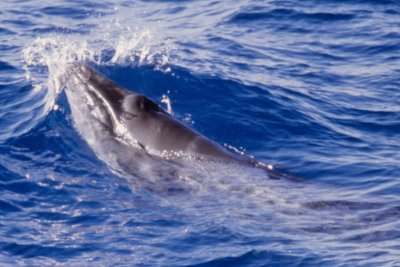News
LOEWE-TBG researchers sequence genome of smallest baleen whale and gain insight into evolution and tumor resistance

At six meters long and weighing three tons, the pygmy right whale (Caperea marginata) is the smallest of all baleen whales. As the last surviving representative of an otherwise extinct family branch of baleen whales, it is still little studied. Scientists from the LOEWE Center for Translational Biodiversity Genomics (TBG), Goethe University Frankfurt and the Swedish University in Lund have analyzed the genome of the baleen whale and found that the animal's genome holds interesting information for cancer research.
Whales are predestined for tumor diseases due to their huge bodies. The more cells there are and divide, the more likely a mutation at a crucial site can damage the genome and trigger the development of a tumor. Yet whales seem to develop cancer unusually rarely. This phenomenon of oncology and statistics, named after its discoverer Richard Peto, is also known as "Peto's paradox." By sequencing the genome of the pygmy right whale, researchers found that it has fewer gene mutations than other whale species. Contrary to the assumption that gene mutations are generally considered harmful, they could have a positive effect in cetaceans and play a special role in cancer resistance.
"Our new findings show that apparently almost all large cetacean species have different positively selected genes in their genomes. This can possibly be explained by the idea, already discussed in paleontology, that the gigantism so typical of baleen whales probably arose several times and independently of each other in the course of evolution," explains Magnus Wolf of SBiK-F and Frankfurt Goethe University, first author of the study. "This means that each large whale species may have developed its own form of tumor resistance, which we hope can be used medically in the future."
"Our study is exactly in line with the approach and motto of the LOEWE Center TBG: 'document - protect - use.' The genomic data show and communicate biodiversity and contribute to measures for its conservation. At the same time, these findings are valuable for medicine from an application-oriented perspective," explains study leader Professor Dr. Axel Janke, also a scientist at SBiK-F and Frankfurt University, who helped establish the Hessian LOEWE Center of Excellence TBG and headed it for six years.

